THE MINI: HOW IT CHANGED THE WORLD OF SMALL CARS

Of the thousands of car models that have come and gone throughout history, only a select few have become popular enough to be known by just their nameplates. The Beetle, the Mustang, the Cobra, and the Corvette, among a few others, have transcended their brands to become legends in their own right. But only one car has actually become its own automaker, outliving the brands that spawned it, and has become so iconic, that it’s not only a national treasure in its home country, but a design that’s a legally-protected trademark. That car is the Mini.
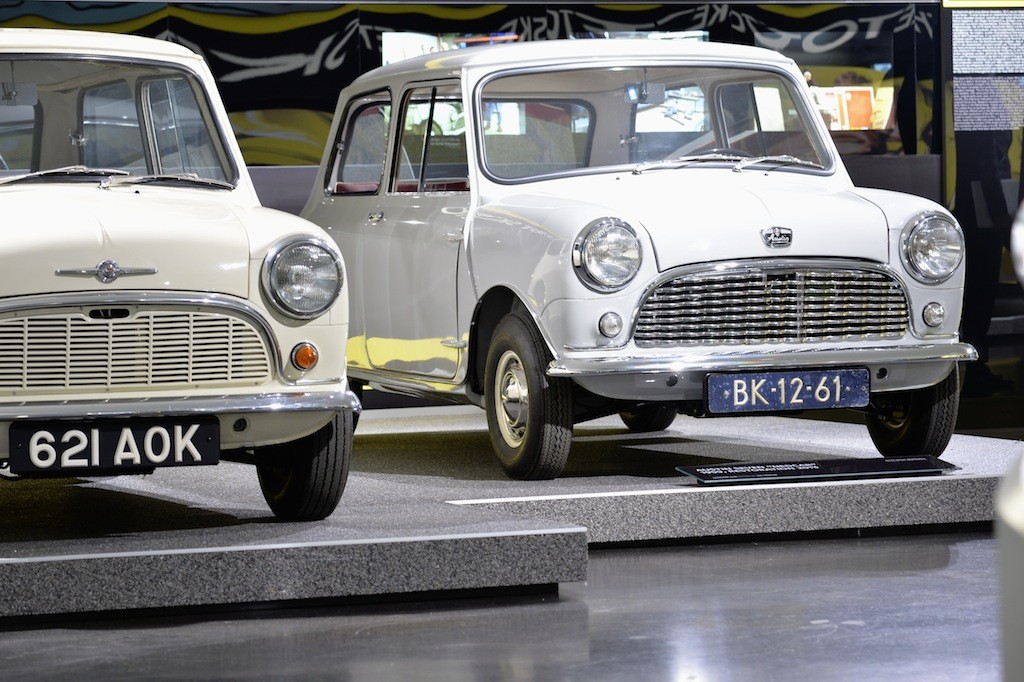
It was slow, cheap and cheerful, and a feared rally racer. It was practical, affordable, and spartan, yet favored by musicians and celebrities all over the world. It was outdated and left for dead for most of its lifespan, but had became a cherished icon by the time its 41-year production run ended in 2000. But while the original Mini’s story ended in the 21st century, it was born out of geopolitical crisis, and the aftereffects of World War II.
In 1956, England was in the middle of the Suez Crisis, sending the country’s still fragile financial system into a recession, and causing gasoline prices to spiral out of control. In response, the British public began buying up German microcars from companies like BMW and Messerschmitt – the very companies that were building weapons used against them a little over a decade before. Fueled by equal amounts indignation and the need to keep customers in showrooms, British Motor Corporation president Leonard Lord launched a project called ADO15, an affordable, fuel-efficient car that could weather the hard times and keep buyers in BMC showrooms. Like the development of the Citröen 2CV in the 1930s, the ADO15 car needed to be simple, but BMC’s requirements called for some serious innovation. They turned to Greek-born engineer Alec Issigonis, who had already penned the best-selling Morris Minor (1948-’71 production run, over 1.3 million sold) to design the car. What Issigonis came up with, however, wasn’t just the answer to Lord’s directives, it became the blueprint for the modern subcompact car.
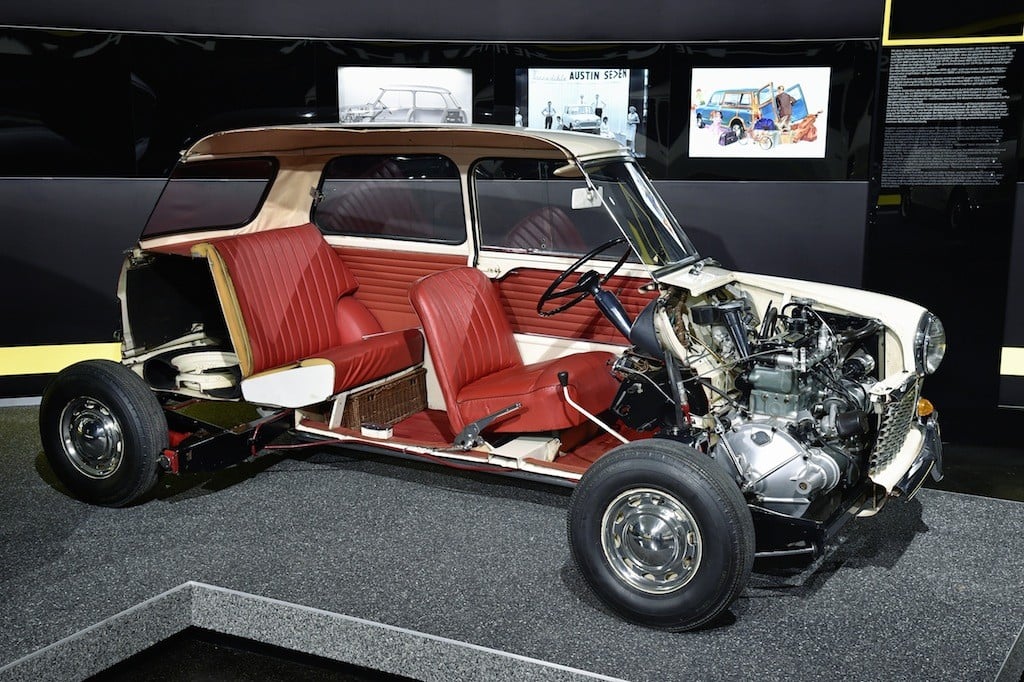
The Mini wasn’t just another car, it was the answer to a seemingly impossible question, and a glimpse into the future. Per Lord’s instructions, the new car could fit into a box 10 feet long, four feet wide, and four feet tall, with at least 60% of it used for interior space. On top of it all, the car used an existing four-cylinder from the Austin A40, keeping costs down. But the real ace up Issigonis’ sleeve was the car’s layout: moving the wheels to the outer-most corners of the car, and utilizing a front wheel-drive setup, with the water-cooled four mounted transversely over the front axle, dramatically shortening the length of the car and creating a open, flat-floor interior – a layout used by virtually every compact car since.
The Mini was an instant hit, with BMC launching the car in nearly 100 countries. Sold as the Austin Seven and the Morris Mini-Minor, it had become so popular by 1963 that BMC tacked on a chrome grille, wood dashboard, and a small trunk to create the upmarket Wolseley Hornet and the Riley Elf. By 1965, BMC had sold 1 million Minis, and the car had begun to take on a life of its own. Despite its spartan interior, and sub-$1,500 base price, the car’s small wheelbase, wide stance, and rubber cone suspension gave the car incredible handling characteristics, and it wasn’t long before it became the car of choice for British tuners.
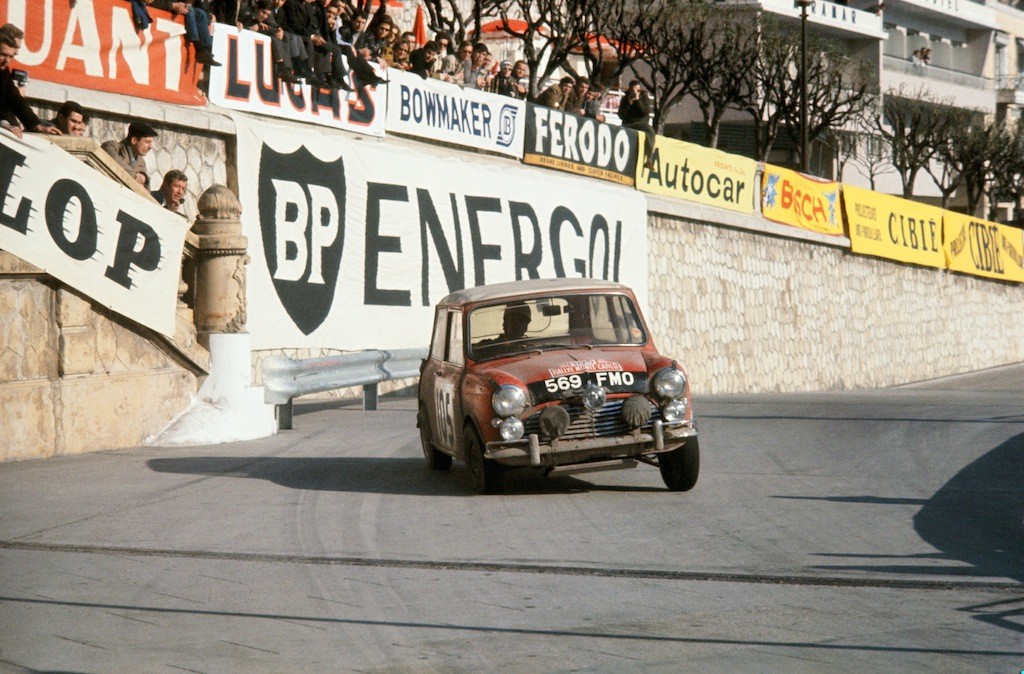
John Cooper, the Formula One builder, saw the Mini’s potential early on, tuning the engine to 85 horsepower (up from 34), adding two SU carburetors, front disc brakes, and an upgraded gearbox to create the Mini Cooper. In 1963, the even hotter Cooper S debuted, with a 1,275 cubic centimeter powerplant that remained available until 1971. Cooper S cars won the prestigious Monte Carlo Rally from 1964-’67, but was disqualified after the ’66 race for improper headlights. Still, this cemented the Mini’s unlikely reputation as a performance car, and its combination of everyman looks and hairy performance made it a celebrity ride of choice. Paul McCartney, Steve McQueen, James Garner, and Peter Sellers all owned them, along with much, much more expensive cars.
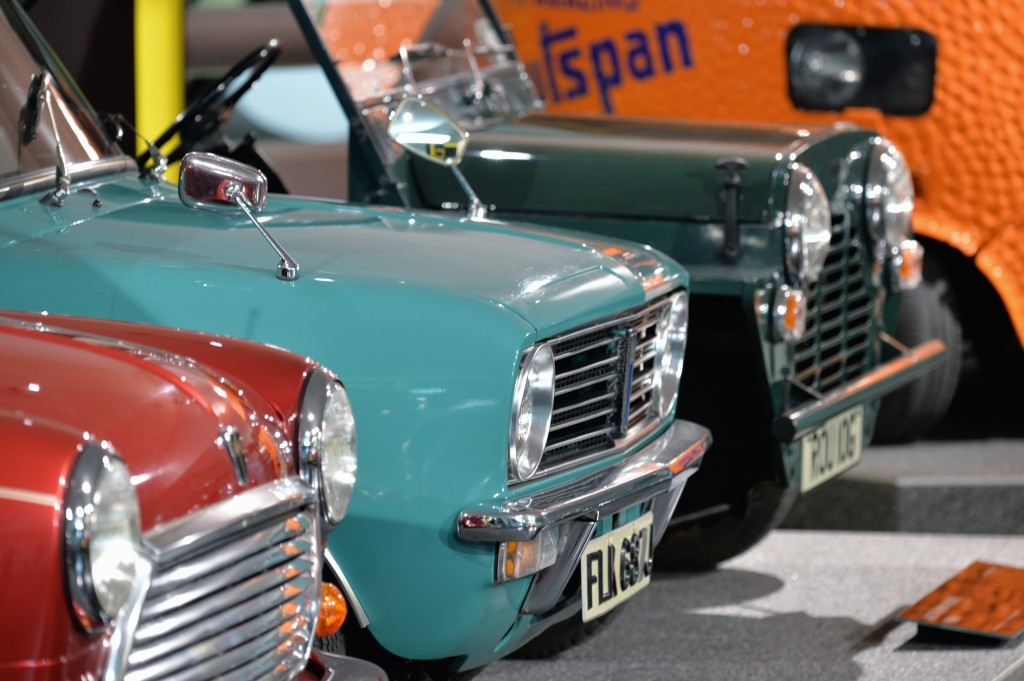
The first big round of changes came to the Mini in 1967, as competition began to increase. BMC evolved into British Leyland in 1968, and a year later Mini became its own brand. By then, the original car had been joined by the Countryman station wagon, a panel delivery called the “Mini Van,” a pickup, and the Jeep-like Moke. In 1970, facing growing competition, British Leyland released the Clubman and 1275 GTs, with a modernized front end and interior. Originally intended to replace the Mini, neither model could touch the original’s popularity, and production ended in 1980.
By the time the Clubman was phased out, the first reports of the Mini’s imminent demise began to emerge when British Leyland introduced the Austin/MG Metro, an in-house competitor that made the Mini feel ancient. Unlike the Mini, which had a small trunk separate from the interior, the Metro was a response to the the hatchback boom, which took the practicality of the Mini, and refined it to appeal to an even wider audience. Still, the little car soldiered on. After a bottoming out period in the mid ’80s, perception of the car changed from outdated also-ran to timeless national treasure. The five millionth Mini was sold in 1986, the same year British Leyland collapsed and became the Rover Group.
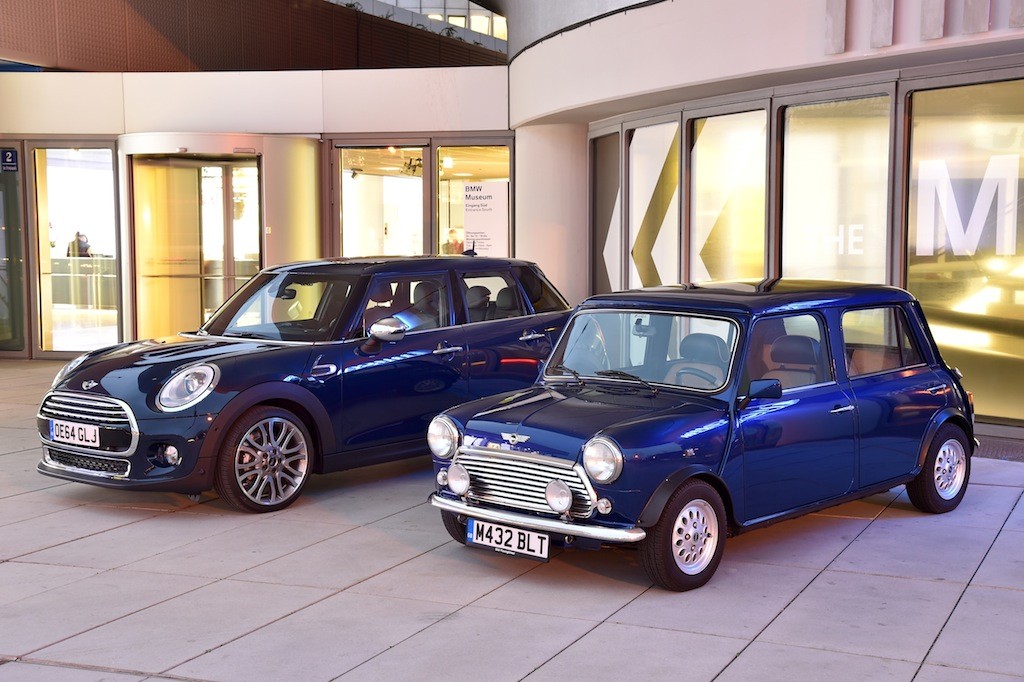
In its golden years, the Mini soldiered on as a car marketed to enthusiasts, and was kept current with a host of special editions. Rover was bought out by BMW in 1994, and began released several concepts to attempt to modernize the car for the 21st century. In 2000, BMW all but dismantled the Rover Group; MG and Rover were bought by a Chinese company, Land Rover went to Ford, and Mini became the softer, larger MINI we know today. The final original Mini, number 5,387,682, made international headlines when it rolled off the Longbridge assembly line on October 4, 2000.
Ask most gearheads about the most important small car of the 20th century, and it’s likely that they’ll mention the Volkswagen Beetle first. While there were an incredible 21.5 million Beetles built over a 65 year production run, its spiritual successor, the Golf, has a front-engined, front-wheel drive layout just like the Mini’s – and it’s sold over 30 million and counting. The Beetle was an outlier; it was air-cooled, rear-engined, and oddly shaped. The Mini was a blueprint. It was the first successful two-box design, and the starting point for nearly every small car that came after it. Simply put, the Mini was the shape of things to come.
THE MINI: HOW IT CHANGED THE WORLD OF SMALL CARS
![THE MINI: HOW IT CHANGED THE WORLD OF SMALL CARS]() Reviewed by Nemanja
on
December 25, 2017
Rating:
Reviewed by Nemanja
on
December 25, 2017
Rating:



